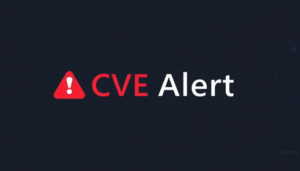CVE Alert: CVE-2025-59506 – Microsoft – Windows 10 Version 1809
CVE-2025-59506
Concurrent execution using shared resource with improper synchronization (‘race condition’) in Windows DirectX allows an authorized attacker to elevate privileges locally.
AI Summary Analysis
Risk verdict
High risk of local privilege escalation; apply the available updates promptly to limit potential exploitation.
Why this matters
An unauthorised, authenticated local user can exploit a race condition in the DirectX Graphics Kernel to gain SYSTEM-level access, enabling full control of the host and potential deployment of follow-on payloads. In enterprise environments, this can enable credential access, lateral movement, and deployment of destructive or disruptive tooling, undermining endpoint security and continuity.
Most likely attack path
Exploiting a local race condition requires an existing user account (PR:L) and no user interaction (UI:N). An attacker would trigger the race through graphics/DirectX workflows, gaining elevated privileges; given L privileges and persistence of access, lateral movement could follow if other endpoints share trust or if admin credentials are harvested. Exploitation is highly contingent on pre-patched systems being exposed to standard graphics workloads.
Who is most exposed
Devices with graphics-capable Windows installations (10/11, Server variants) that have not received the latest updates are at greatest risk. Organisations with broad desktop fleets, GPU-accelerated servers, or gaming/graphics workstations are most likely to encounter this in production.
Detection ideas
- Monitor for unexpected privilege-escalation events and kernel-module activity around DirectX components.
- Look for post-exploitation memory corruption signatures or unusual crash dumps linked to graphics kernel drivers.
- Correlate spikes in GPU driver API calls with privilege-escaping attempts.
- Deploy enhanced EDR traces around user-mode to kernel-mode transitions during graphics workloads.
Mitigation and prioritisation
- Patch to the fixed Windows build levels indicated by the affected versions; prioritise systems with DirectX workloads and GPUs.
- Apply enterprise-wide patch management with verification and rollback plans; schedule maintenance windows.
- Implement least-privilege for graphics workflows; restrict accounts that can trigger DirectX operations.
- Enable enhanced monitoring for DirectX kernel activity and privilege escalations; ensure robust endpoint detection rules.
- If patching is delayed, apply compensating controls such as application allow-listing, strict GPU driver updates, and network segmentation to limit lateral movement.
Support Our Work
A considerable amount of time and effort goes into maintaining this website, creating backend automation and creating new features and content for you to make actionable intelligence decisions. Everyone that supports the site helps enable new functionality.
If you like the site, please support us on Patreon or Buy Me A Coffee using the buttons below.


